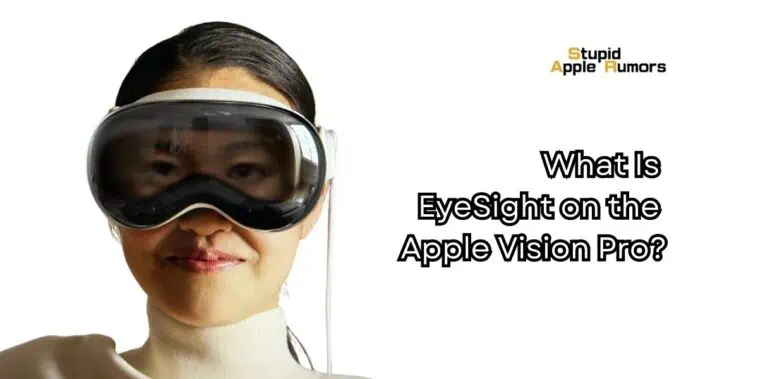Apple’s Vision Pro, priced at $3,499, has introduced the world to a revolutionary feature – EyeSight.
This innovation, integrated within the visionOS, transforms the augmented reality (AR) experience by diminishing the feeling of seclusion that’s typically felt while donning such headsets.
With Vision Pro, you won’t feel detached from the people around you. In fact, it feels like they’re a part of your AR journey.
This feature also provides a visual hint about your focus, allowing those around you to discern if you can see them or if you are fully absorbed in your AR world.
So if you’re wondering what is EyeSight on the Apple Vision Pro, read on to see how this feature works.
What Is EyeSight on the Apple Vision Pro?
Table of Contents
EyeSight enhances the augmented reality (AR) experience by minimizing the sense of isolation commonly experienced with AR headsets.
With the Vision Pro, users feel connected to their surroundings, enabling onlookers to ascertain whether a user is engaged in the AR world or aware of their real-world environment.
This feature harnesses an array of sensors, including 14 cameras, LiDAR sensors, IR cameras, and illuminators, and advanced display technology.
EyeSight is dynamic, supporting modes like Transparent, Full Immersion, and Capture, adjusting based on user activity.
EyeSight, thus, bridges the divide between the digital and tangible, fostering enhanced human-tech interactions.
How Does EyeSight Work on the Vision Pro?
The Apple Vision Pro, designed for spatial computing, uses an array of sensors and components to facilitate an immersive visual experience for the user.
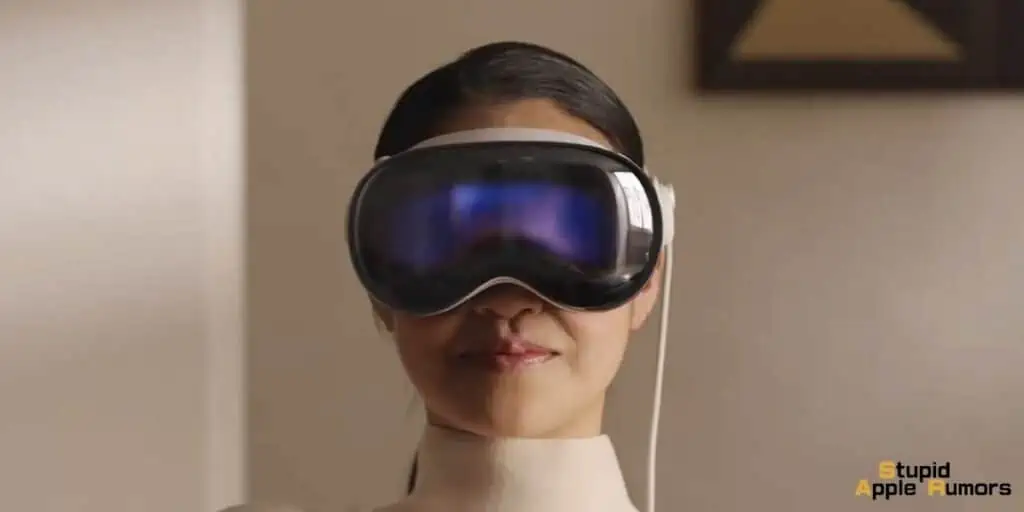
Eyesight on the Vision Pro is a combination of these sensors, hardware components, and the software integration Apple is known for.
- Cameras:
- The Vision Pro boasts an impressive 14 cameras, with 10 on the outside and 4 on the inside.
- The external cameras are responsible for capturing details both inside and outside the headset. These cameras sense the environment in stereoscopic 3D, providing a realistic depth perception for the user.
- The four internal IR cameras have a specialized role. They track the user’s eye movements, giving the Vision Pro real-time data on where a user is looking. Additionally, these cameras are also responsible for performing 3D scans of the user’s iris, which is vital for user authentication via Apple’s OpticID system.
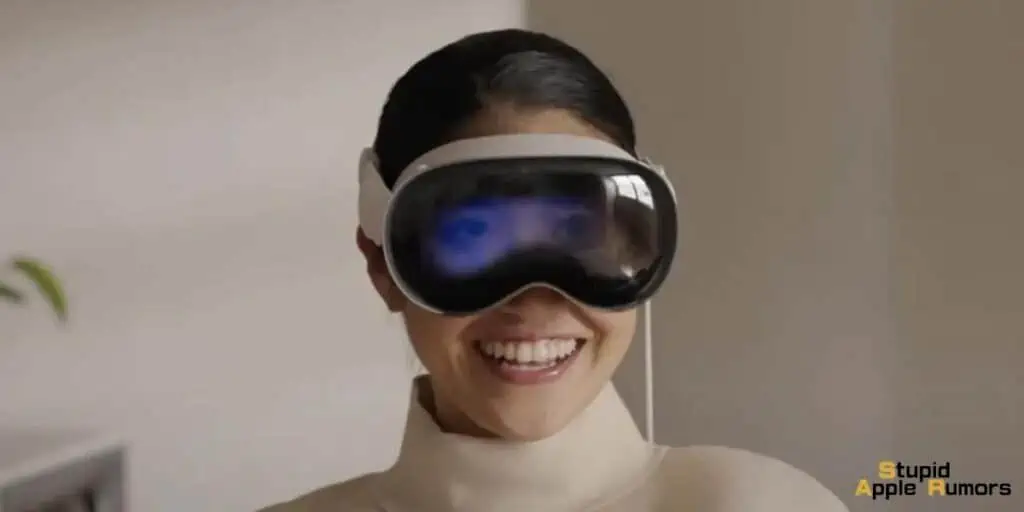
- LiDAR Sensor:
- Positioned above the nose, the LiDAR sensor measures distances using light. By doing so, it creates a 3D map of the world around the user, adding to the depth and realism of the visual experience. Additionally, it captures a 3D model of the user’s face which is then used as an avatar during FaceTime interactions.
- IR Cameras and Illuminators:
- Infrared (IR) cameras are crucial for the Vision Pro’s ability to function in low light or absolute darkness. They can capture and track in conditions where conventional cameras might struggle.
- The Vision Pro is equipped with illuminators which emit invisible infrared dot grids. These grids assist the IR cameras in capturing data, especially in low-light conditions. For instance, the IR illuminators surrounding each eye aid in eye movement tracking and detailed iris scans.
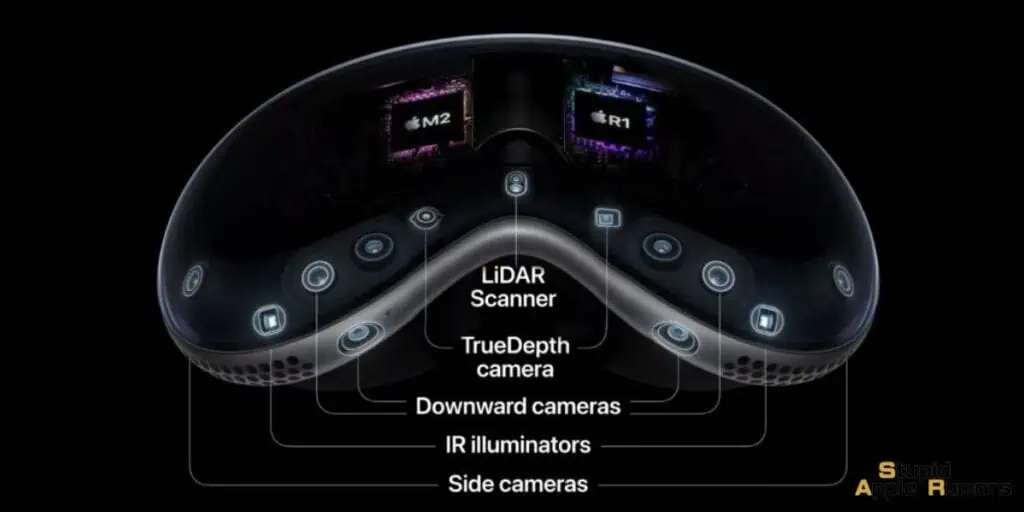
- Accelerometer & Gyroscope:
- Vital for understanding the headset’s position and movement in space, these sensors work in conjunction.
- The accelerometer detects movements in six directions – left, right, forward, backward, upward, and downward.
- The gyroscope assists in understanding the tilting motion of the user’s head.
- Combined with data from cameras and scanners, these sensors provide the Vision Pro’s R1 chip with comprehensive information about the user’s spatial position and gaze direction.
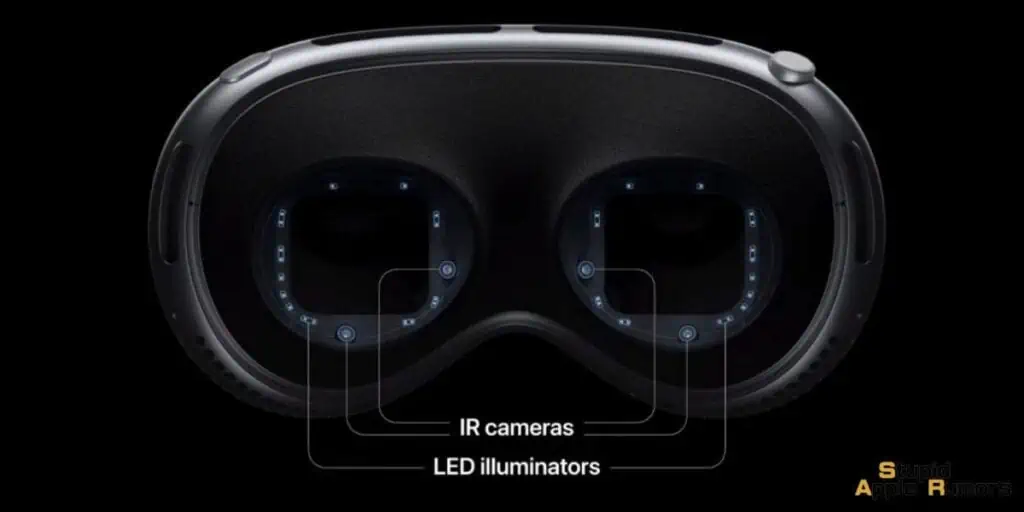
- Displays:
- Eyesight on the Vision Pro is greatly enhanced by its cutting-edge displays. With a combined pixel count surpassing that of a 4K television, these displays provide a crystal-clear visual output.
- The external display showcases the user’s eyes to the outside world, and its 3D impression ensures others perceive depth rather than a flat image.
Which EyeSight Modes Does the Vision Pro Support?
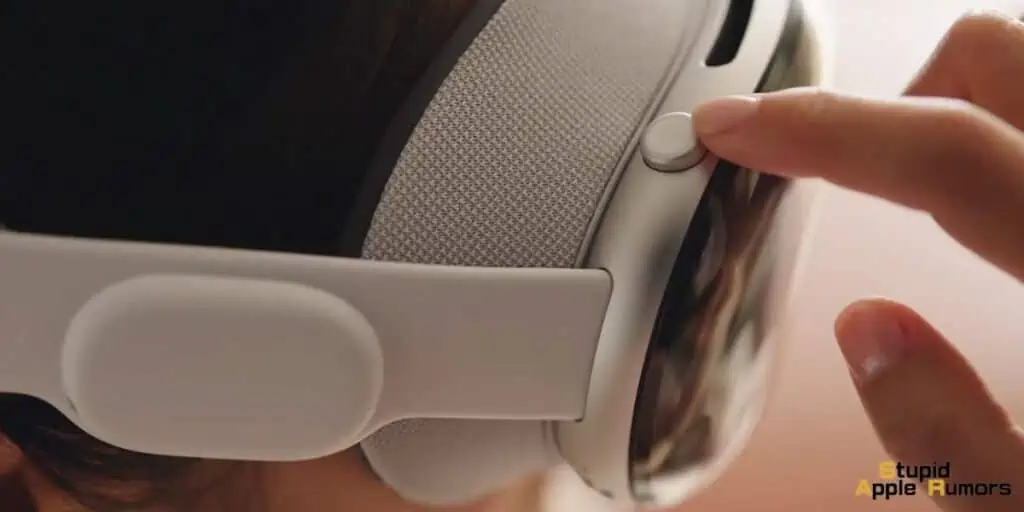
EyeSight isn’t a static feature. It’s dynamic and can adapt based on your actions. Here are some modes you can toggle between in visionOS:
- Transparent Mode: In this mode, when someone approaches, they ‘enter’ your AR space, alerting you of their presence. Simultaneously, your digital eyes are displayed to them, signaling your attention.
- Full Immersion Mode: When you’re deeply engrossed in AR or VR, EyeSight showcases a vibrant pattern on the external display. This animation is akin to Siri’s orb, notifying onlookers that you’re occupied.
- Capture Mode: While taking spatial images or videos, a white, misty pattern appears, either flashing for pictures or animating for recordings. This visual sign acts as a privacy notification, akin to the camera shutter sound on iPhones.
What’s The Impact Of EyeSight On AR/VR Experiences?
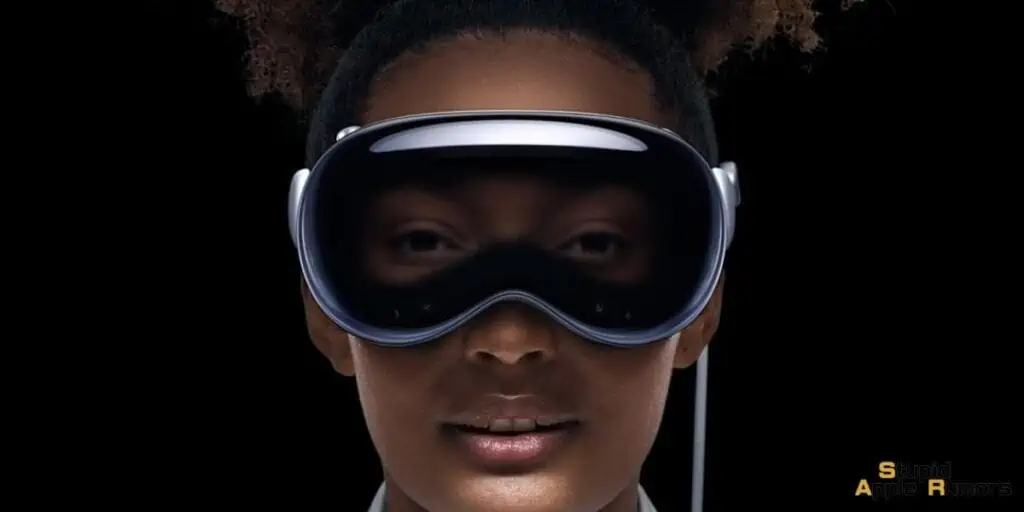
Apple’s EyeSight truly elevates the AR/VR landscape. Setting Vision Pro distinctly ahead of its competitors, this feature enriches user experience in profound ways.
With EyeSight, the Vision Pro doesn’t just serve as a piece of advanced technology; it acts as a bridge, fostering meaningful connections between users and their surroundings.
Moreover, as with any groundbreaking innovation, it piques our curiosity about the cultural embrace of such advancements.
Given time, it’s exciting to think about how society might warmly welcome and integrate with individuals donning the Vision Pro, appreciating the blend of technology and humanity displayed through those digital eyes.
What is EyeSight on the Vision Pro FAQs
How does EyeSight work?
EyeSight on the Vision Pro uses a combination of sensors, hardware components, and Apple’s software integration.
It boasts 14 cameras (10 external and 4 internal), LiDAR sensors, IR cameras, illuminators, an accelerometer, a gyroscope, and advanced display technology.
Together, these components provide real-time tracking, depth perception, and immersive visual experiences.
What role does the LiDAR sensor play?
Positioned above the nose, the LiDAR sensor measures distances using light, creating a 3D map around the user.
It enhances depth perception and realism, and also captures a 3D model of the user’s face for FaceTime avatar interactions.
How does the Vision Pro function in low-light conditions?
The Vision Pro’s IR cameras, coupled with illuminators emitting invisible infrared dot grids, ensure functionality in low-light or total darkness.
They aid in eye movement tracking and detailed iris scans.
How does the Vision Pro’s EyeSight stand out from other AR devices?
With EyeSight, Apple’s Vision Pro sets a new standard for AR headsets.
It uniquely bridges the digital and physical worlds and enhances human interactions in a tech-driven era, showcasing Apple’s dedication to crafting user-centric experiences.
Takeaway
In conclusion, Apple’s Vision Pro, with its unique EyeSight feature, sets a precedent for augmented reality headsets.
It not only bridges the gap between the digital and physical worlds but also enriches human interactions in a tech-dominated era.
The Vision Pro signifies Apple’s next significant leap since the Apple Watch, and with EyeSight, Apple once again proves its commitment to crafting meaningful user experiences.
Related

